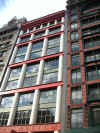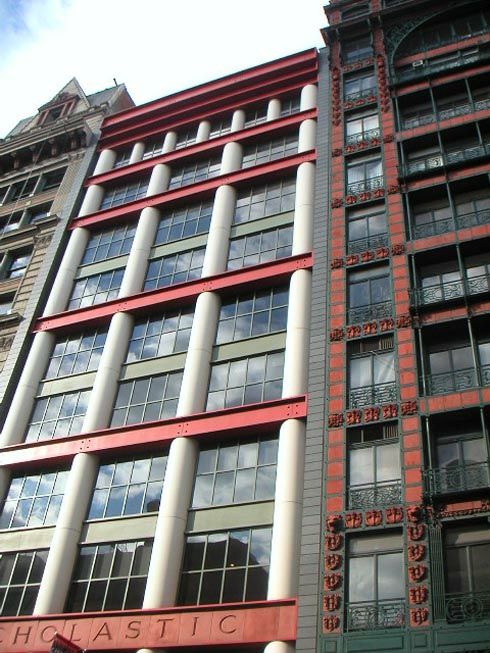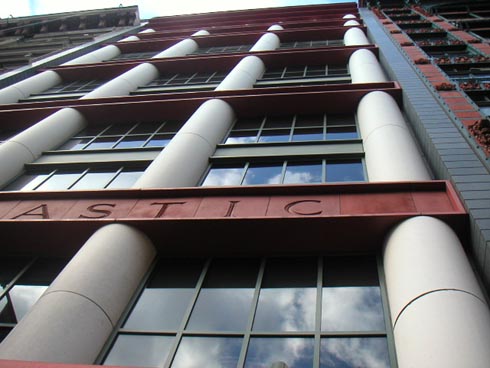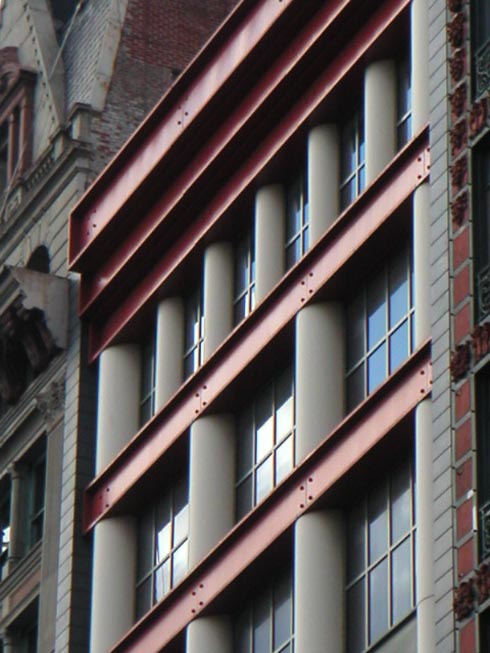|
notes
|
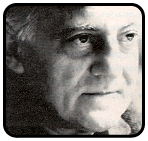 
"Rossi loved New
York's skyscrapers and its orderly grid, but he also had an eye for the
city's accidents and mysteries..."
by William
Higgins
Late last summer, Aldo Rossi's design for a new
office building in Soho received its final city approvals. Within a few
weeks, the architect was dead, following a car accident near his home on
Lago Maggiore in northern Italy. Rossi will be missed by all who know
his work, and especially by those who knew the man.
I came to know Aldo Rossi through our work together on his only New York
project. My memories of him are grounded in many months of meetings,
conversations, presentations, drinks, and meals--the close interactions
that ultimately result in buildings, and occasionally in friendships.
Like his buildings, Rossi was at once serious and whimsical, magisterial
and accessible, popular and retiring. Although an influential teacher
and theoretician, he was at heart an artist and a visual poet, and that
is the way he designed his buildings.
Rossi's Soho project, an extension of Scholastic Publishing's headquarters
on lower Broadway, is a case in point. The building's columnar Broadway
facade, in steel, terra-cotta, and stone, echoes the scale and the
formal, Classical character of its commercial neighbors. The rear
facade, on Mercer Street, extracts a gritty essence from its more
utilitarian surroundings of plain cast iron and weathered masonry. Paul
Goldberger has praised the Scholastic design as "a building that will
teach generations of architects the proper way to respond to historic
contexts." True enough, but it will teach more than propriety. It will
teach poetry as well.
Rossi loved New York's skyscrapers and its orderly grid, but he also had
an eye for the city's accidents and mysteries, for the New York of
unfinished lot-line walls, dark side streets, and rusting fire escapes.
One of the architect's best sketches for the Soho building shows the
Broadway facade in mist and shadow, under the kind of irregular light
that might have filtered through nineteenth-century coal smoke. Rossi's
mind was in this time and place when he first conceived the building. I
remember him at an early meeting in his studio on East 20th Street, when
he looked out a rear window toward a chance landscape of common brick
walls, asphalt roofs, and wooden water tanks. The towers of Madison
Square and Midtown were visible, but only at a distance. He said simply,
"This is the New York I love."
Publicly and privately, Rossi always said it would be an honor to have a
building in New York, and especially on Broadway. There was a real,
unforced humility in this. Rossi had built all over the world, and had
received the highest praise for it; but he talked about the Scholastic
building with the enthusiasm of a young architect celebrating his first
big commission. After years of design and review, it finally looks as
though there will be an Aldo Rossi building on Broadway. Sadly, the
honor will come posthumously for Aldo, but his building will be an honor
to New York for as long as it stands.
|
